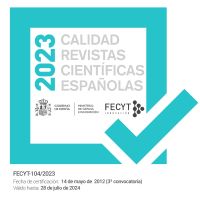Vocational maturity and self-efficacy in 3º and 4º of compulsory secondary education, high school and vocational training
DOI:
https://doi.org/10.5944/reop.vol.24.num.3.2013.11251Keywords:
vocational maturity, vocational self-efficacy, life project, secondary school, vocational trainingAbstract
ABSTRACT
In this article we analyze vocational maturity and vocational self-efficacy of students from3º and 4º of Compulsory Secondary Education, High School and Vocational Training in a school of Tenerife (Canary Islands). Specifically we examine the differences of those variables by two other: educational level and sex in. In the research participated 171 students that collaborated in the research project "The Academic and Professional Transition of Young People". The research group designed the Academic and Labor Guidance Questionnaire that includes: 1) an adaptation of the Spanish version of the Career Maturity Questionnaire (Álvarez y cols., 2007) and 2) the Vocational Self Efficacy Scale (Carbonero y Merino, 2002). The analysis of the students’ vocational maturity and vocational self-efficacy shows significant differences by educational levels: the students of High School and High Training School had higher scores in both variables. However, it doesn’t observe differences by gender. The clarity of life project differs depending on the students’ vocational maturity and vocational self-efficacy. Results highlight the need for: a) increasing motivation in students of Compulsory Secondary Education and Middle Training School in their academic and professional future; b) working vocational maturity and vocational self-efficacy with these students to facilitate the planning of the personal life project.
Downloads
Downloads
How to Cite
Issue
Section
License
Las obras que se publican en la revista REOP están sujetas a los siguientes términos:
1. Los autores conservan los derechos patrimoniales (copyright) de las obras publicadas, y garantizan a la revista el derecho de ser la primera publicación del trabajo al igual que permiten la reutilización de las mismas bajo la licencia de uso indicada en el punto 2.
2. Las obras se publican en la edición electrónica de la revista bajo una licencia Creative Commons Reconocimiento-NoComercial 4.0 Internacional . Se pueden copiar, usar, difundir, transmitir y exponer públicamente, siempre que: I) se cite la autoría y la fuente original de su publicación (revista, editorial y URL de la obra); II) no se usen para fines comerciales; III) se mencione la existencia y especificaciones de esta licencia de uso.
3. Condiciones de auto-archivo. Se permite y se anima a los autores a difundir electrónicamente la publicación de sus obras, ya que favorece su circulación y difusión y con ello un posible aumento en su citación y alcance entre la comunidad académica.






